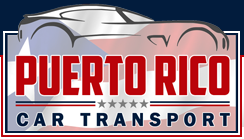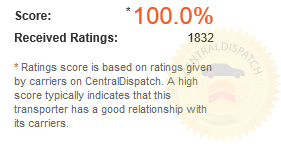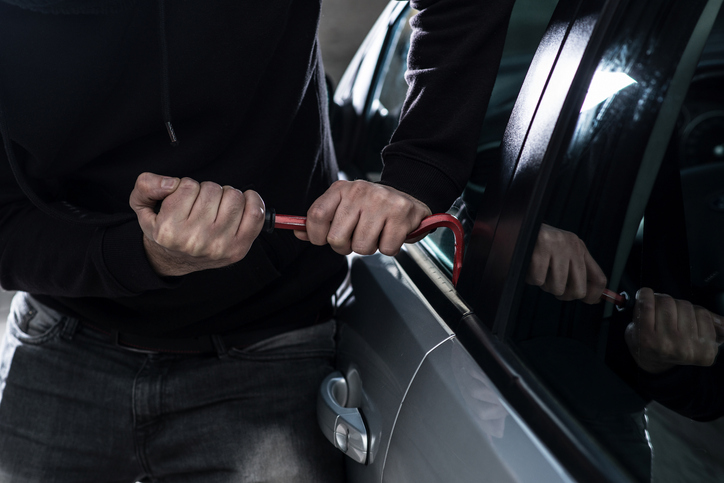When shipping your vehicle to or from Puerto Rico, understanding the insurance coverage that protects your car during transit is just as important as selecting the right shipping method. While Puerto Rico is a U.S. territory, transporting vehicles across maritime routes presents unique considerations that differ from standard continental auto transport. Whether you’re relocating to San Juan, transporting your vehicle to the mainland, or auto shipping for business purposes, proper insurance coverage ensures your peace of mind throughout the shipping process.
Car Shipping Insurance Basics for Puerto Rico
Shipping a vehicle to Puerto Rico involves unique considerations since it combines overland and maritime transportation. During its journey on an ocean carrier, your vehicle will be exposed to saltwater, maritime conditions, and multiple handling points. Dedicated shipping insurance is essential for proper protection.
Types of Insurance Coverage Available
When shipping your vehicle to or from Puerto Rico, several insurance options protect your investment:
- Basic Cargo Insurance: This foundational coverage protects your vehicle against damage that occurs during loading, transport, or unloading. Included with most shipments, it covers damages directly caused by the carrier during handling and transit.
- Liability Coverage: Focuses on the carrier’s legal responsibility to compensate you for damage to your vehicle during transport. Coverage limits and specific protections vary by carrier.
- Comprehensive Coverage: This broader option extends protection beyond basic cargo insurance to include damages from external factors such as weather events, natural disasters, and other circumstances beyond the carrier’s direct control.
- Gap Coverage: Essential for newer or financed vehicles, this covers the difference between insurance payouts and your remaining loan balance in case of severe damage or total loss during shipping.
Your selection should align with your vehicle’s value and your personal comfort with potential risks during transport.
Cost Factors and Coverage Options for Puerto Rico Auto Transport
The cost of insurance for Puerto Rico car shipping varies based on several factors, including your vehicle’s value, the shipping route, and the level of coverage selected. Understanding these factors helps you budget appropriately for your auto transport needs.
Additional Insurance Coverage Costs
Enhanced protection for Puerto Rico auto transport is available through additional insurance coverage options. These supplemental plans provide more comprehensive protection with higher coverage limits than basic liability alone.
Pricing for additional coverage is typically calculated as a percentage of your vehicle’s declared value, with various tiers available to match different needs and budgets. Though this increases upfront costs, it significantly reduces financial exposure during transit.
Many drivers find the additional peace of mind justifies the incremental cost. When you book with an auto shipping company, you’ll have the opportunity to select coverage that best matches your specific needs.
Factors That Affect Insurance Premiums
Several key factors influence the cost of car shipping insurance for Puerto Rico routes:
- Vehicle Value: Higher-value vehicles naturally cost more to insure due to increased potential replacement or repair costs.
- Vehicle Type: Specialty vehicles, classic cars, or vehicles with modifications may require specialized coverage at higher rates.
- Vehicle Size: Larger vehicles (over 900 cubic feet) often require special handling equipment and accommodations, which can affect both shipping rates and insurance premiums.
- Shipping Route: Routes with higher historical claim rates may carry higher insurance premiums.
- Shipping Method: Different shipping methods (RORO vs. container) may affect insurance costs based on their relative risk profiles.
- Shipping Season: Rates may fluctuate during hurricane season (June through November) when maritime risks increase.
Learn more about the costs to ship a car to Puerto Rico.
How to Protect Your Vehicle During Puerto Rico Auto Transport
Documentation Required for Insurance Claims
Proper documentation is essential for successful insurance claims. Before shipping your vehicle to Puerto Rico, gather and maintain the following documentation:
- Pre-shipping Inspection Report: This detailed report documents your vehicle’s condition prior to transport and serves as the baseline for identifying any transport-related damage.
- Bill of Lading: This transport document includes vehicle condition notes and is signed by both you and the carrier representative.
- Photos and Video: Comprehensive visual documentation of your vehicle from multiple angles provides indisputable evidence of its pre-shipping condition.
- Shipping Contract: This document outlines the terms of service, including insurance coverage details and claim procedures.
- Vehicle Valuation Documentation: For high-value vehicles, professional appraisals or valuation reports may be required to support claims for significant damage.
Keep copies of all documentation in a secure location and maintain digital backups when possible. Having this documentation readily available streamlines the claims process and increases the likelihood of fair compensation in the event of damage.
Pre-shipping Vehicle Preparation Tips
Proper preparation of your vehicle before shipping reduces the risk of damage while ensuring a seamless car shipping experience. Follow these essential preparation steps:
- Thoroughly clean your vehicle inside and out
- Remove all personal belongings, as these items are typically not covered by transport insurance
- Secure or remove loose parts and custom accessories that could become damaged during transit
- Disable alarms and provide spare keys to avoid battery drainage or access issues
- Check and document fluid levels, noting any existing leaks or mechanical issues
- Make sure the gas tank is about a quarter full — enough to operate, but not so much as to add unnecessary weight
- Ensure tires are properly inflated and in good condition to facilitate loading and unloading
Transporting an electric vehicle? Explore these tips to prepare for electric car shipping.
Essential Steps for Inspection
A thorough vehicle inspection before and after shipping is critical for any potential insurance claim. Follow these steps to ensure proper documentation:
- Conduct the inspection in daylight with a freshly washed vehicle
- Document the exterior systematically, moving clockwise around the vehicle
- Take close-up photos of existing damage with an object for scale
- Capture all four corners at 45-degree angles
- Document the interior condition thoroughly
- Photograph the odometer reading
- Test and document all electronic systems
- Complete the shipping company’s inspection report
- Get the driver’s or representative’s signature before loading
Repeat this process upon delivery and compare it against your pre-shipping documentation to identify any new damage.
Why Choose Puerto Rico Car Transport?
With over 30 years of experience shipping vehicles to and from Puerto Rico, we understand the unique challenges of land and sea transport. We offer a range of auto transport services to suit your needs, including door-to-door service, stateside trucking, port processing, RoRo shipping, customs documentation, and final delivery to your location in Puerto Rico. Our shipping specialists will help you select insurance coverage that perfectly aligns with your needs and concerns. We offer door-to-port and door-to-door shipping for Puerto Rico, with nationwide pickup from any residence or business, ensuring your vehicle arrives safely at the port in San Juan.
Experience the confidence that comes from working with Puerto Rico’s most trusted vehicle shipping provider. Use our online car shipping calculator today for a free instant quote.
FAQ
Does my personal auto insurance cover my vehicle during shipping to Puerto Rico?
Most personal auto insurance policies do not cover your vehicle during commercial transport. Coverage typically suspends once your vehicle is loaded onto a transport carrier. We recommend contacting your insurance provider to confirm your specific coverage and selecting appropriate shipping insurance to fill any gaps in protection during transit to Puerto Rico.
What happens if my vehicle is damaged during shipping to Puerto Rico?
If damage occurs during shipping, you should note it on the delivery inspection report immediately upon receiving your vehicle. Take detailed photos of the damage and contact your shipping coordinator right away. With proper documentation and timely reporting, our claims department will guide you through the process of filing an insurance claim based on your selected coverage level.
Are personal items in my vehicle covered by car shipping insurance for Puerto Rico?
No, personal items left in your vehicle during shipping are not covered by auto transport insurance. We highly recommend all vehicles be shipped empty, with exceptions only for child seats, jumper cables, and in some cases, automobile parts for the vehicle itself.



